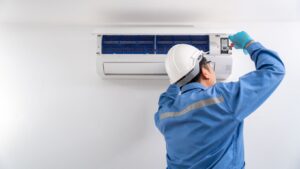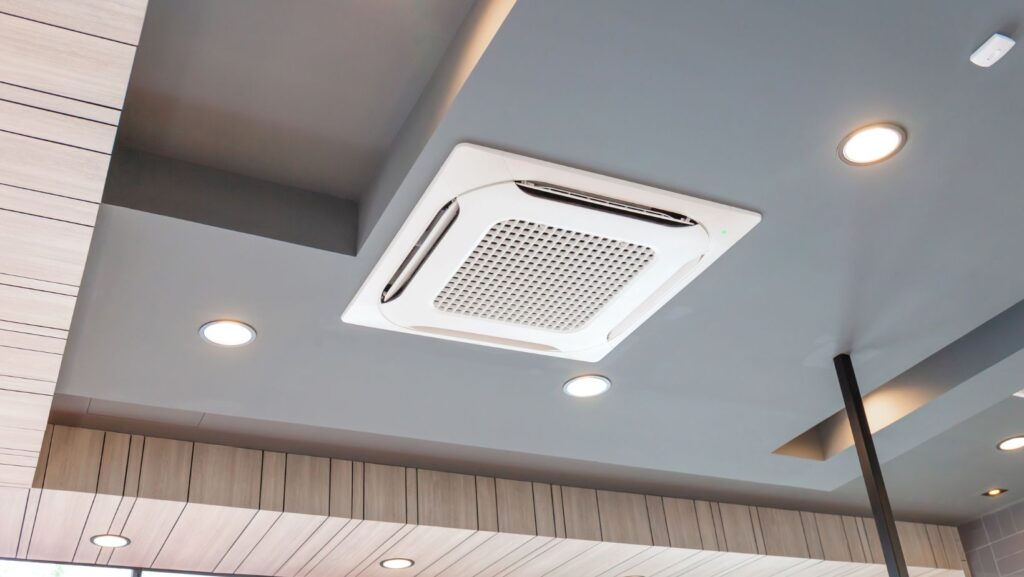As summer temperatures continue to soar, there’s a silent revolution happening in the world of air conditioning technology. Innovations are transforming the way we cool our homes and offices, bringing not just comfort, but also significant energy savings. For businesses and homeowners aiming to maximize cost efficiency and sustainability, Utility Bidder provides valuable insights into energy-saving options.
This article dives into the latest advancements in air conditioning technology that are set to redefine the cooling industry. From smart thermostats to eco-friendly refrigerants, it’s a fascinating time to upgrade your AC system.
New Air Conditioning Technology
Delving deeper into the course of air conditioning technology evolution, it becomes clear that significant changes have taken place. The transition from rudimentary methods to sophisticated cooling systems marks a history filled with inventive approaches.
From Ice Blocks to Modern Systems
 The inception of air conditioning can be traced back to times when ice blocks were primarily used for cooling. Owners bought large ice blocks and placed them in their rooms, leveraging the subsequent melting and evaporation to reduce the temperature.
The inception of air conditioning can be traced back to times when ice blocks were primarily used for cooling. Owners bought large ice blocks and placed them in their rooms, leveraging the subsequent melting and evaporation to reduce the temperature.
In sharp contrast, modern systems integrate advanced technology at every level. Digital control options and temperature-adjusting software form an integral part of these contemporary air conditioning systems. Evolution has also seen the replacement of hazardous CFC refrigerants with eco-friendly alternatives.
Key Innovations Over the Decades
In the course of this evolution, numerous strategic innovations have surfaced. The advent of the electrical air conditioning unit by Willis Carrier in 1902 stands as a key development. This revolutionary move placed air conditioning within the reach of common households.
Another significant enhancement is the energy efficiency advancements that emerged in the late 20th century. From utilizing energy-saving fan blades to integrating efficient compressors, air conditioning technology saw a marked improvement in energy utilization.
Exploring the Market Leaders
In the realm of air conditioning technology innovation, a few names sit firmly at the forefront. In an industry replete with numerous brands vying for market share, they have not only made significant strides but also set the pace for others to follow. Assessing these market leaders establishes a broader understanding of what the future of air conditioning technology holds.
Brands Pioneering New Technology
 Certain brands around the world stand apart, demonstrating advanced progression in air conditioning technology. For instance, Daikin’s Thermostatic Expansion Valve (TXV) technology that enhances overall system efficiency and Carrier’s Greenspeed Intelligence that optimizes energy output denote the paradigm shift in air conditioning technology.
Certain brands around the world stand apart, demonstrating advanced progression in air conditioning technology. For instance, Daikin’s Thermostatic Expansion Valve (TXV) technology that enhances overall system efficiency and Carrier’s Greenspeed Intelligence that optimizes energy output denote the paradigm shift in air conditioning technology.
Trane, on the other hand, is making a name for itself with its Trane ComfortLink II, an innovative, high-tech thermostat that integrates seamlessly with their air conditioning systems. In a similar vein, Lennox distinguishes itself with the iComfort S30, an ultra-smart thermostat capable of adapting to a family’s lifestyle and cooling patterns.
Looking to the Future
As air conditioning technology advances, it paves the way for a future teeming with potential and innovation.
Potential Developments in AC Tech
From self-managing algorithms to advanced filters, the future of air conditioning technology presents an array of possibilities. Experts predict the emergence of fully automated systems, refining both energy management and climate control. In particular, these technologies appreciate Airocide filters, renowned for removing microorganisms from the air. This development positions itself as a boon for allergy sufferers, contributing significantly to indoor air quality. Apple co-innovated with NASA to create Airocide technology, aptly illustrating the shielding potential of this cutting-edge filtration method.
The Role of AI and Machine Learning
AI and Machine Learning don’t merely provide incremental improvements to current AC systems. Instead, they promise a paradigm shift in technology. Initiatives including the Auto Mode in smart thermostats symbolize a departure from conventional energy consumption habits. In this setting, AI studies the user’s behavioral patterns, adjusting temperature preferences accordingly. Done accurately, this can consequently yield substantial energy savings.
Furthermore, AI integration enables predictive maintenance. By learning from component performance patterns, the system foresees potential breakdowns before they occur. Sustaining a constant temperature proves more efficient than frenzied cooling or heating, reducing strain on components. This, in turn, enhances the equipment’s life expectancy and saves on costly maintenance.

